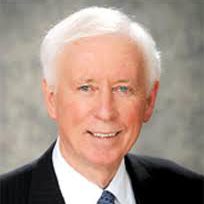The American Medical Association’s Moon Shot
Earlier this week I traveled to Jacksonville, Florida for a meeting of the Duval County Medical Society (DCMS) to hear my friend Dr. Ardis Hoven, President-Elect of the American Medical Association (AMA). The DCMS, founded in 1853, is the oldest county medical society in Florida. Dr. Hoven, an infectious disease specialist from Kentucky, will be inaugurated as the 168th president of the AMA next month in Chicago, Illinois. She outlined for the group the three areas of focus of the AMA’s ambitious new strategic plan. These include accelerating change in medical education; care delivery and payment reforms to address professional satisfaction/sustainability, and improving health outcomes.

The initiative on medical education will involve working to bridge the gap between how physicians are currently being trained and the needs of the U.S. health care system now and in the future. In keeping with its historic leadership in physician education, the AMA has launched a $10 million competitive grant initiative aimed at bringing innovative changes to medial education. The focus will include developing new methods to measure physician key competencies, promote methods to achieve patient safety and performance improvement, improve understanding of the health care system and optimize the learning environment. An impressive 82 per cent of the US medical schools submitted proposals for the grants. A national panel will select 8 to10 awardees for this five-year initiative for improvements in undergraduate medical education.
The care delivery and payment initiative will focus on helping physicians navigate the changing health care environment resulting in better outcomes for patients and greater professional satisfaction for physicians. This will include initiating research activities and partnership with physicians; identifying effective delivery models for high-quality patient care; sharing these insights with physicians, and developing tools and resources to enable physicians to adopt strategies to meet their needs. As a first step the AMA is working with a national health care research firm to identify 30 diverse physician practices. The AMA will work with those practices to develop an understanding of which payment models promote satisfaction and sustainability in different practice settings. From that research will come empirical evidence that will shape AMA policy and services to enable physicians to thrive well into the future.
The third strategic goal is improving health outcomes, and has as its long-term objective achieving measurable improvements for patients in the U.S. To achieve this the AMA has selected two of the nation’s most troubling and widespread issues: Cardiovascular disease and type 2 diabetes. The focus will be on achieving specific improvements in the number of U.S. adults with blood pressure, blood sugar and cholesterol levels at recommended levels. To address cardiovascular disease the AMA will begin by addressing hypertension. Partners in this effort will include the Armstrong Institute for Patient Safety and Quality of the Johns Hopkins University and the Department of Health and Human Services “Million Hearts” initiative. To address diabetes the initial focus will be on pre-diabetes. Partners in this effort will include the Centers for Disease Control and Prevention and the YMCA.
One of my favorite quotes speaks to the subject of being involved in big goals – of daring greatly. In 1920 former US President Theodore Roosevelt gave a speech at the Sorbonne in Paris, France. The title was “Citizen in a Republic”. However, one memorable passage from that speech has caused it to be forever identified as his man in the arena speech. He said:
“It is not the critic who counts; not the man who points out how the strong man stumbles, or where the doer of deeds could have done them better.
The credit belongs to the man who is actually in the arena. Whose face is marred by dust and sweat and blood. Who strives valiantly. Who errs. Who comes up short again and again, because there is not effort without error and shortcoming. But who does actually strive to do the deeds.
Who knows great enthusiasms, the great devotions. Who spends himself in a worthy cause. Who at the best knows in the end the triumph of high achievement. And who at the worst, if he fails, at least fails while daring greatly. So that his place shall never be with those cold and timid souls who neither know victory nor defeat.”
The AMA’s strategic initiative is “daring greatly” in a “worthy cause”. It is aimed at nothing less than changing health care in the US for the better. It is in the finest tradition of a medical profession that cares for and cares about the lives and health of patients. It is laudable, ambitious – even breathtaking.
Harkening back to recollections of America’s achievement at the end of the sixties, it is the AMA’s moon shot.

